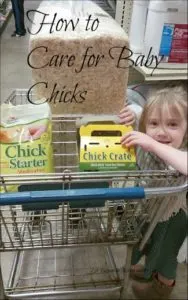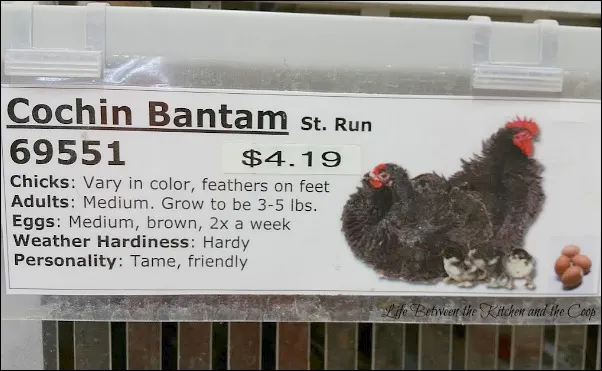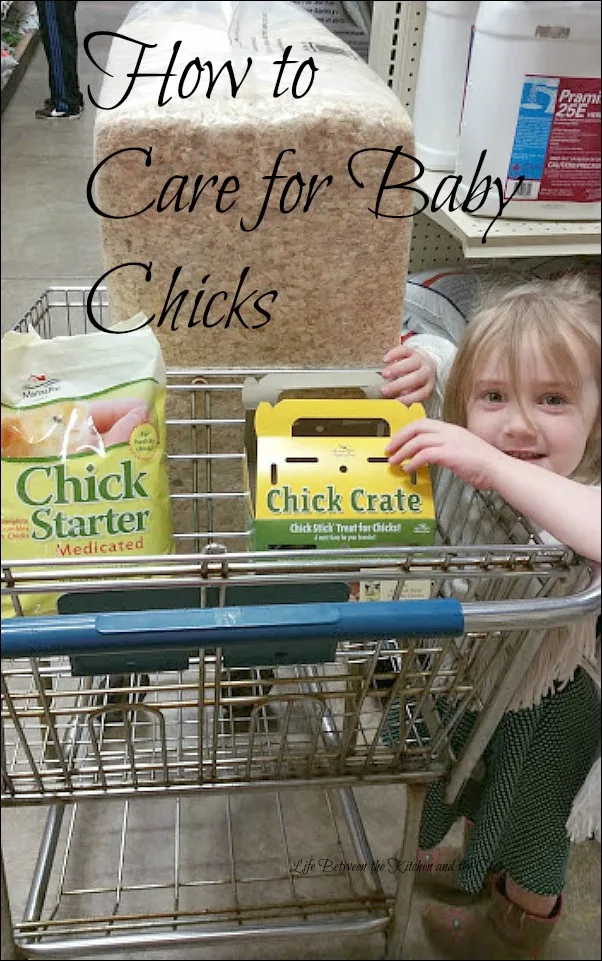Hi, guys! Guess what? We got baby chicks a couple of weeks ago! Can I just tell you – those little chicken babies are so stinkin’ cute! We’ve been having so much fun with them. Of course the best part is that you just can’t beat those fresh, organic eggs that they give to you once they’ve grown up! Have you been thinking about getting baby chicks for your urban homestead? If you have, I should tell you a few things that you need to know when you’re getting ready to get them! Before you start preparing to get baby chickens, you need to find if it is legal to have chickens where you live and if so, how many you’re allowed to have. Some places have no restrictions at all, but if you live in a city it’s very common for them to have rules about chicken-keeping. Some cities don’t allow it at all. Others allow it, but only allow a certain number of chickens per household and often they don’t allow roosters. Once you are sure you can have baby chicks, you will need to get some supplies to get ready for them. You will need a brooder (a heated home for them), bedding, food, water, and food/water dispensers. I will cover those things in more detail in a bit.

It is important to know some things about sexing baby chicks. When you get baby chicks sexing (determining if they are male or female) is difficult and depending on the breed sometimes cannot be done with great accuracy. If you see that the chicks you’re looking to buy are listed as “straight run” (that’s what the “St. Run” means on the IFA store label below-listed after the breed name), that means they’re just sent as hatched and there is absolutely no way for them to tell whether they’re boys or girls…it is a total crap shoot. You just have to hope for the best 🙂

With some breeds those who sell them do their best to tell you what gender they are, but it’s not unusual for them to be wrong. Over the years we’ve had a few of our baby chicks that were supposed to be girls turn out to be boys. That is a problem, my friends! Roosters in the city are a big no-no because they’re so noisy and people in the city live so close to their neighbors. We’ve had to give a couple of roosters away. It’s sort of sad really, because roosters are often the most beautiful chickens. However, I don’t want my neighbors to hate me due to a rooster’s early morning wake-up call, nor do I want to be in trouble with the city, so I comply.
Once you know that you can have chickens, you will obviously, need a home for them. Baby chicks need a brooder to live in. A brooder needs to be a large container that they can’t chew their way through and something that’s predator-proof. It also needs to allow them adequate oxygen. We use a huge wooden shipping crate, minus the lid. We lay a screen over it instead. Placing a screen over the top of the brooder is usually adequate to protect the baby chicks from cats. If you’re keeping baby chicks in the garage, you might wonder why do I need something predator-proof? Well, the truth is that predators can even be household animals (like cats). Remember that, my friends!
Supplies you need to raise baby chicks
- Once you have your brooder, there are a few supplies you will need. First of all, you will want to get some sort of bedding for the baby chicks. Pine wood shavings (manufactured for use with animals) or chopped straw will work well. Keep in mind that chickens will poop in their bedding, so you have to be prepared for the fact that you’re going to need to clean the brooder. You can either fill the brooder deep with bedding and do spot removal of the problem areas or just completely change the bedding periodically.
- Baby chicks are tiny, covered in fuzz, but unfortunately that fuzz doesn’t keep them very warm. When they are small they will need a heat lamp. You will notice if you have a large crate for them, they will tend to congregate in the area where the heat lamp is. They like to be kept warm. They will need that heat lamp until they get enough feathers to keep their body temperature stable by themselves.
- You will need to have food and water in the brooder for them. We hang ours just slightly off the ground so they can still reach it, but can’t get in it to poop in it. Another reason it is a good idea to hang the feed and water is so they don’t roost on top of it. Chickens will roost on any stable elevated surface. Hanging their feed and water prevents them from roosting on it. This affiliate link from Amazon is an example of what most Baby chick feeders look like:
- We feed our baby chicks medicated chick starter (I’ve included an Amazon affiliate link to the brand we use below). You don’t have to use that brand, it’s just what we like to use. Some people just do organic chicken food. The reason that we like the medicated baby chick starter is because a lot of people we know who’ve tried to raise baby chicks end up losing some to illness. We’ve never really had that problem with the medicated baby chick starter. That is completely anecdotal evidence, so you do whatever you prefer 🙂
- You might also want to get a good book to help you along the way if you are a newbie to chicken-keeping. Here is an affiliate link to a good one that Amazon sells that might be helpful:
Now that you know what you need to properly take care of your chickens, I have a link to a video I made of us setting up our brooder. If you click here you can see a little Facebook Live video that I did showing how we set up the brooder for our new baby chicks. Keep in mind that I’m not very experienced at doing these live videos. It’s not perfect, so just enjoy the imperfection 🙂

Now they won’t be cute little chicks like this forever. You will be surprised how fast they grow! Once feathers completely cover their body, which is around two months old, you can move them outside. When we first put them outside we usually have them in an old dog crate. Having a smaller home like that at first seems to help them feel a little bit more secure as they move out into the Great Big Wide World. As they get a little more comfortable with their surroundings, we then move them into the chicken coop and get rid of the dog kennel. If you are integrating these chicks in with a flock that you already have, there are some important things to keep in mind. You can read about that in a post I wrote if you click here.
One last thing I want to mention: we don’t give our chickens free run of the backyard all the time. We do, however, open the chicken run gate and let them run around the backyard when we’re home to keep an eye on them. The rest of the time they hang out in the chicken run. You will want to make sure there are no toxic plants in the area that they will be. Also, keep in mind the potential for outdoor predators like raccoons, neighborhood cats, etc. Assess your surroundings and decide whether you need some kind of screen over the top of your chicken run to protect them.
Okay, I have dumped out everything in my brain that I can think of that you need to know when you first start out having baby chicks. If you think I forgot something, feel free to add it to the comments. I love to hear from you, my friends!
‘Til next time
Deb
